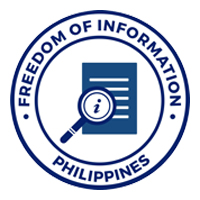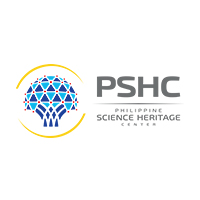A roundtable discussion (RTD) on the sustainability of Philippine Marginal Seas was conducted by the National Academy of Science and Technology, Philippines (NAST PHL), in partnership with the National Research Council of the Philippines (NRCP), on March 24, 2015 at Hotel Jen Manila. The multidisciplinary group of scientists was joined by representatives from the Department of Foreign Affairs, Department of Justice, National Mapping and Resource Information Authority (NAMRIA), the Coast Guard, UNESCO, and several NGOs in the first of a series of discussions to draft a road map for the sustainable use of the country’s archipelagic waters.
A marginal sea is defined as a sea or basin bound by islands, peninsulas and/or submarine ridges adjacent to an open ocean or other bodies of water. The Philippines is surrounded by large marginal seas such as the West Philippine Sea (also known as the South China Sea), the Philippine Sea in the East, and the Sulu Sea, the Sulu-Sulawesi Sea and Celebes Sea in the south.
National Scientist Lourdes J Cruz, professor emeritus of the Marine Science Institute at UP Diliman, stressed that the sustainable use of the country’s marginal seas is key to the survival and well-being of its people. She encouraged the participants to work together in providing the scientific basis for the prudent use of coastal and marginal sea resources as we face the challenges of food security, climate change, and natural disasters.
According to Dr. Cesar L. Villanoy, 1997 Outstanding Young Scientist (OYS) awardee in physical oceanography and professor at the Marine Science Institute of UP Diliman (UPMSI), the Philippines has a number of smaller and shallower marginal seas in the Visayas or Central Philippines and these are very productive. He explained that Philippine archipelagic basins are separated by topographic barriers, which can restrict the entry of colder waters from the ocean and affect the biophysical characteristics and productivity of the basins. When the barrier sill is low, cold water from the ocean can enter the basin whereas if the barrier sill is high, only warm waters from the upper water layers of the ocean can enter the basin. The wind jets that funnel through the straits in between islands help circulate the nutrients in the marginal seas causing higher productivity in the area. He identified understanding of the dynamics of marginal seas, including accurate representation of winds over the archipelagic basins and land-sea-air interaction as possible areas of research.
On the other hand, Academician Michael L. Tan, anthropologist and chancellor of UP Diliman talked about setting a socio-cultural agenda for research on marginal seas. According to Acd. Tan, the development of Philippine culture was largely influenced by the bodies of water surrounding it such as the Sulu Sea, West Philippine Sea, and the Luzon Strait. Tracing of the historical sea routes indicated the Philippines to be at the heart of a commercial network during the pre-colonial era, where Arabs, Indians, Indonesians, and Chinese merchants traded raw materials and manufactured products. The Philippine marginal seas were used as source of natural resources, routes for migration, trading and cultural exchange thus influencing the geopolitics of the area. Social science research on marginal seas can contribute to disaster management efforts; adaptations to the environment; and reconstruction of the Philippine history in pre-colonial and early colonial eras. He recommended conducting research on the current state of human communities, particularly indigenous knowledge on natural resource management, climate, economic subsistence, and maritime skills.
On the other hand, Academician Michael L. Tan, anthropologist and chancellor of UP Diliman talked about setting a socio-cultural agenda for research on marginal seas. According to Acd. Tan, the development of Philippine culture was largely influenced by the bodies of water surrounding it such as the Sulu Sea, West Philippine Sea, and the Luzon Strait. Tracing of the historical sea routes indicated the Philippines to be at the heart of a commercial network during the pre-colonial era, where Arabs, Indians, Indonesians, and Chinese merchants traded raw materials and manufactured products. The Philippine marginal seas were used as source of natural resources, routes for migration, trading and cultural exchange thus influencing the geopolitics of the area. Social science research on marginal seas can contribute to disaster management efforts; adaptations to the environment; and reconstruction of the Philippine history in pre-colonial and early colonial eras. He recommended conducting research on the current state of human communities, particularly indigenous knowledge on natural resource management, climate, economic subsistence, and maritime skills.
As a reactor, Dr. Nestor T. Castro, vice-chancellor for community affairs of UP Diliman and president of the International Federation of Social Science Organizations explained the cultural interactions and barter trade among the surrounding communities of the Sulu Sea. On the other hand, Dr. Soledad M. Dalisay, chair of the anthropology department of CSSP, UP Diliman discussed the importance of marginal seas in the life and culture of indigenous tribes such as the Badjaos.
Dr. Annadel S. Cabanban presented the sustainability initiatives for the marginal seas of the Philippines in view of global and regional development. She discussed how the Philippine initiative relates to the 10-year Future Earth (FE) program of the International Council for Science (ICSU) and the Sustainability Initiative for the Marginal Seas of South and East Asia (SIMSEA) of the ICSU Regional Committee for Asia and the Pacific (ICSU-ROAP). The Regional SIMSEA and the Philippine Marginal Seas are in line with the research thrusts of Future Earth on Dynamic Planet, Global Sustainability and Transformation toward Sustainability. Important features of the ICSU’s FE program include transdiciplinarity and inclusiveness in an approach characterized by co-design, co-implementation, co-production and co-benefit. Dr. Cabanban is the program executive of the ICSU-ROAP SIMSEA at the Program Office hosted by UPMSI.
Academician Rhodora V. Azanza, professor and assistant vice president of the UP System, revealed that the UP System signed a memorandum of agreement with the Academy of Sciences Malaysia in January 2015 on the establishment of the Regional SIMSEA Office now being hosted by UPMSI. She presented the proposed establishment of a SIMSEA Philippines committee. According to her, SIMSEA Philippines shall promote strategic collaborations among Philippine organizations and concerned individuals in relation to the sustainability of Philippine marginal seas; help ensure sustainability of the project by seeking funds from government and non-government organizations for its multi-and transdisciplinary projects and assist in the enhancement of the impacts of the SIMSEA program through dialogues, conferences and other activities targeting appropriate government agencies and general public. SIMSEA Philippines will attract and motivate young scientists to pursue research on the country’s marginal seas. An executive council will be organized to consider nominations to Committee.
In a plenary session, questions pertaining to transformations to sustainability were posed by the resource persons headed by Dr. Marie Antonette J. Meñez, OYS awardee and director of UPMSI. The other resource persons were Acd. Porfirio M. Aliño, member of NAST Biological Sciences Division and professor at UPMSI; Dr. Miguel D. Fortes, 1987 OYS awardee and a retired professor of UPMSI; and Dr. Inez Ponce de Leon, assistant professor in science communication at Ateneo de Manila University. Dr. Aletta T. Yñiguez, assistant professor of UPMSI gave an excellent synthesis of the RTD discussions while NS Edgardo D. Gomez gave the concluding remarks.
The activity was organized by the Mathematical and Physical Sciences Division (MPSD) of NAST MPSD and the NAST Secretariat headed by Executive Director Luningning Samarita-Domingo with National Scientist (NS) Lourdes J. Cruz, member of MPSD and Professor Emeritus at UP MSI, as the focal person of the RTD. Acd. Evelyn Mae Mendoza, chair of MPSD served as the moderator and master of ceremonies. NAST President Acd. William Padolina and Acd. Rafael Guerrero of the NRCP Division of Agricultural Sciences expressed their encouragement and support for the Philippine Marginal Seas initiative.
The current initiative for the sustainable development of Philippine marginal seas is very timely as the launching of the ASEAN Economic Community (AEC) on 31 December 2015 approaches. Harnessing the knowledge power of physical, biological, and social sciences in the participatory planning and management of marginal seas resources is essential to the nation’s ability to benefit from the AEC and much later on from the envisioned ASEAN Socio-Cultural Community (ASCC) and the ASEAN Political-Security Community (APSC).
The current initiative for the sustainable development of Philippine marginal seas is very timely as the launching of the ASEAN Economic Community (AEC) on 31 December 2015 approaches. Harnessing the knowledge power of physical, biological, and social sciences in the participatory planning and management of marginal seas resources is essential to the nation’s ability to benefit from the AEC and much later on from the envisioned ASEAN Socio-Cultural Community (ASCC) and the ASEAN Political-Security Community (APSC).











